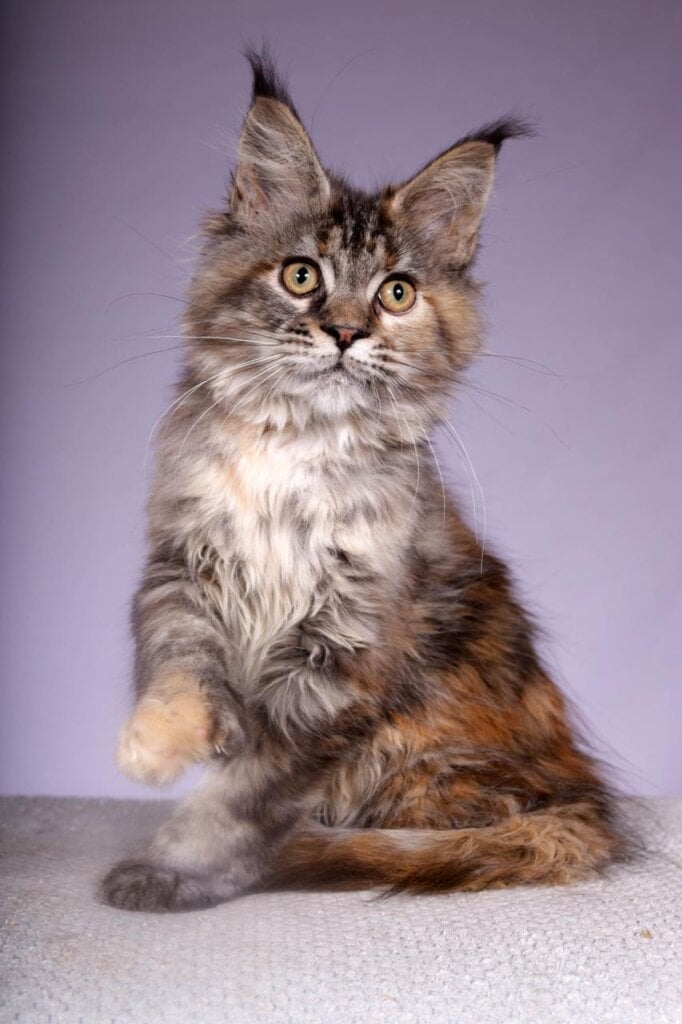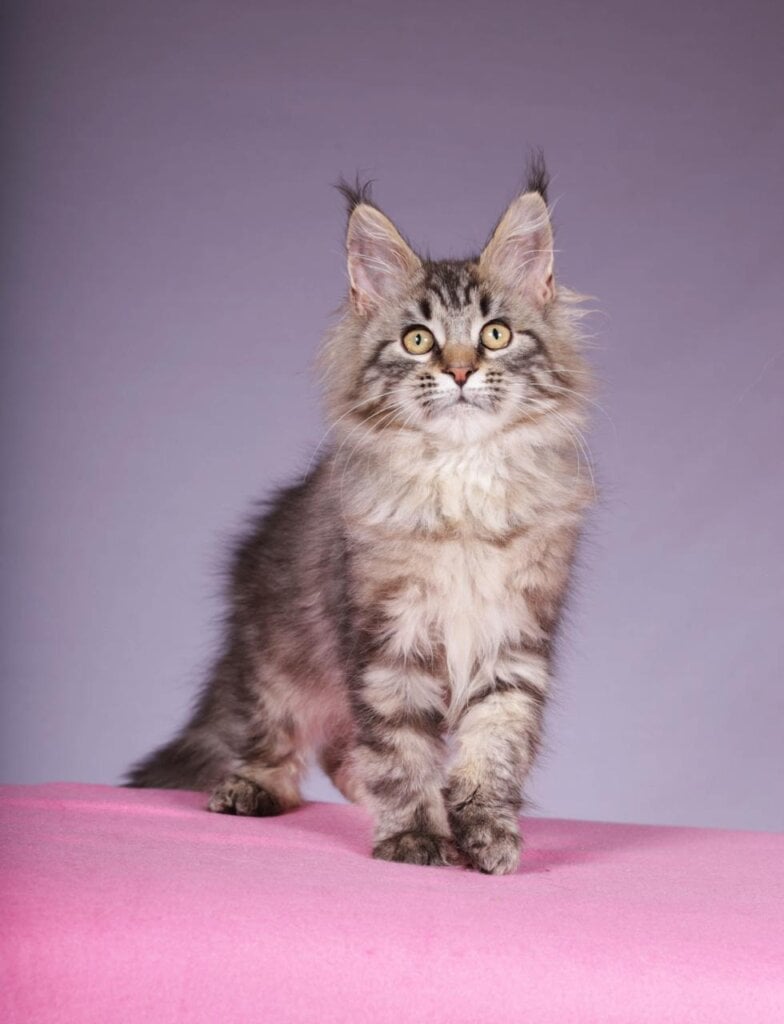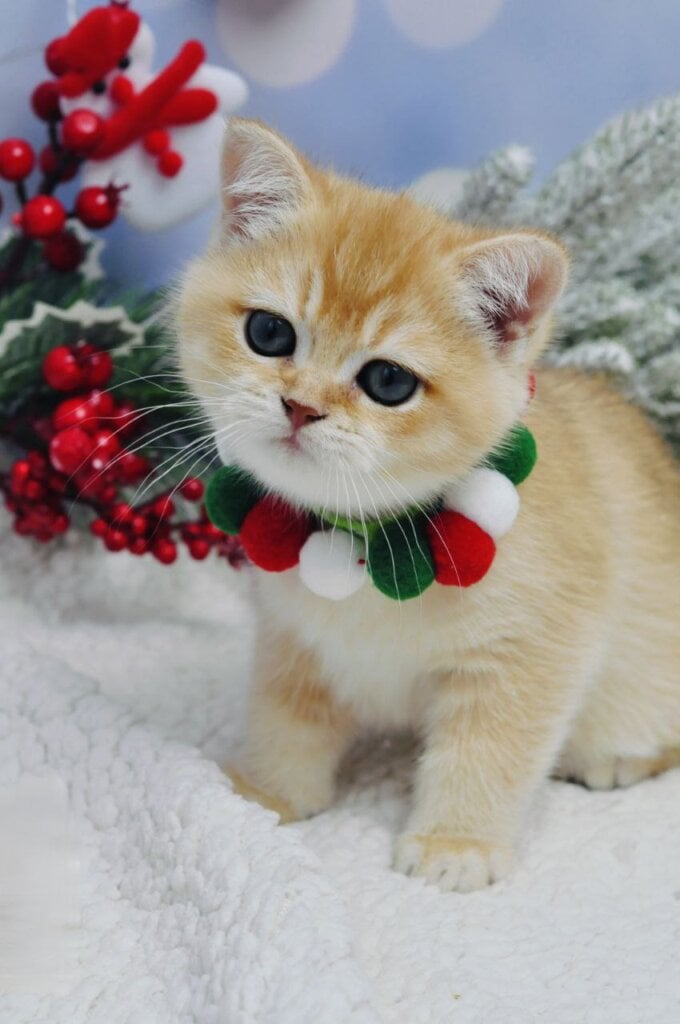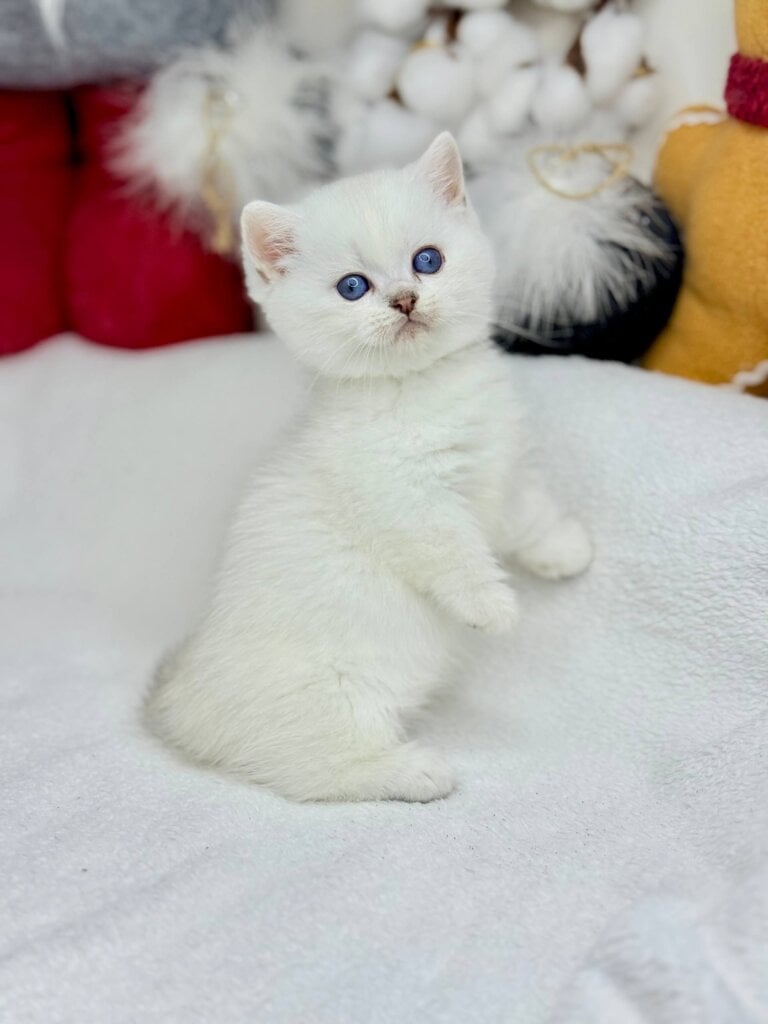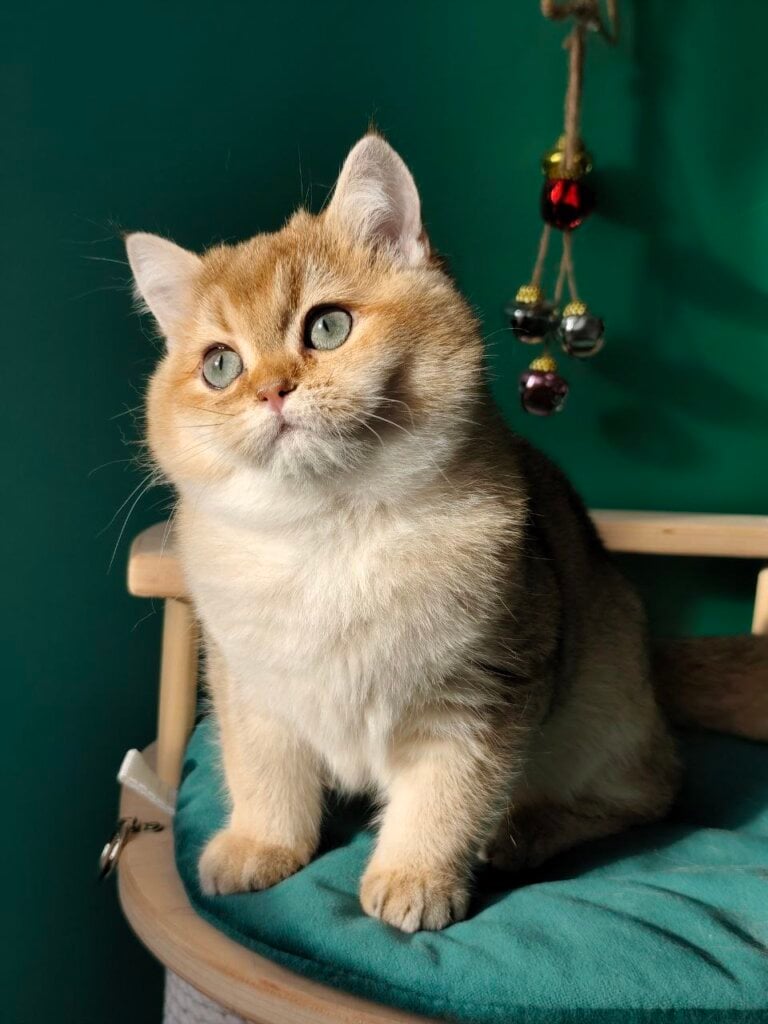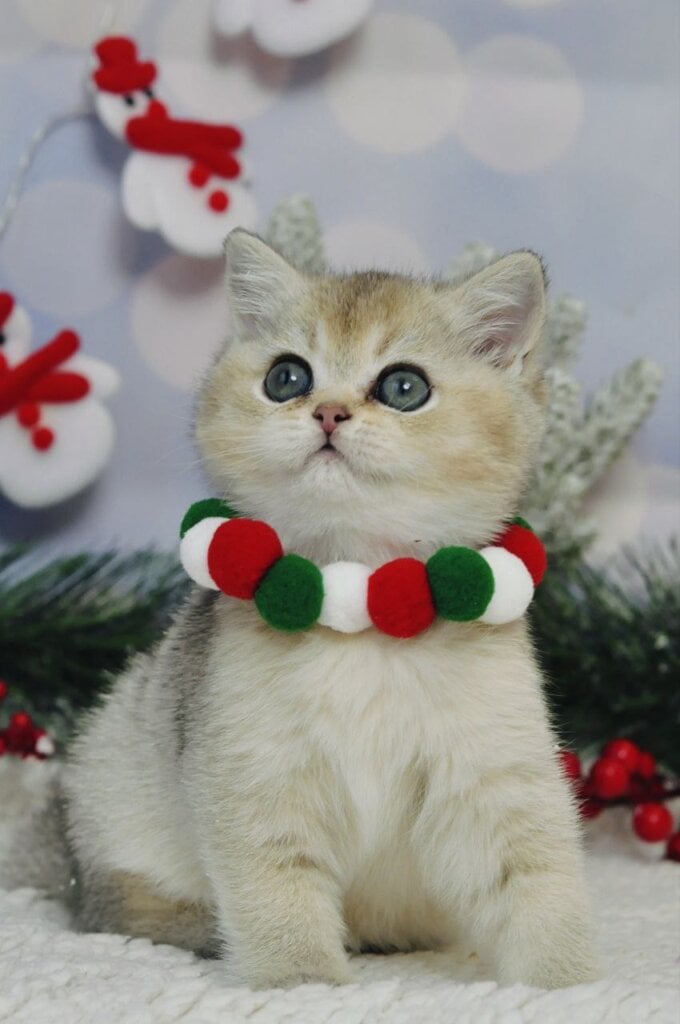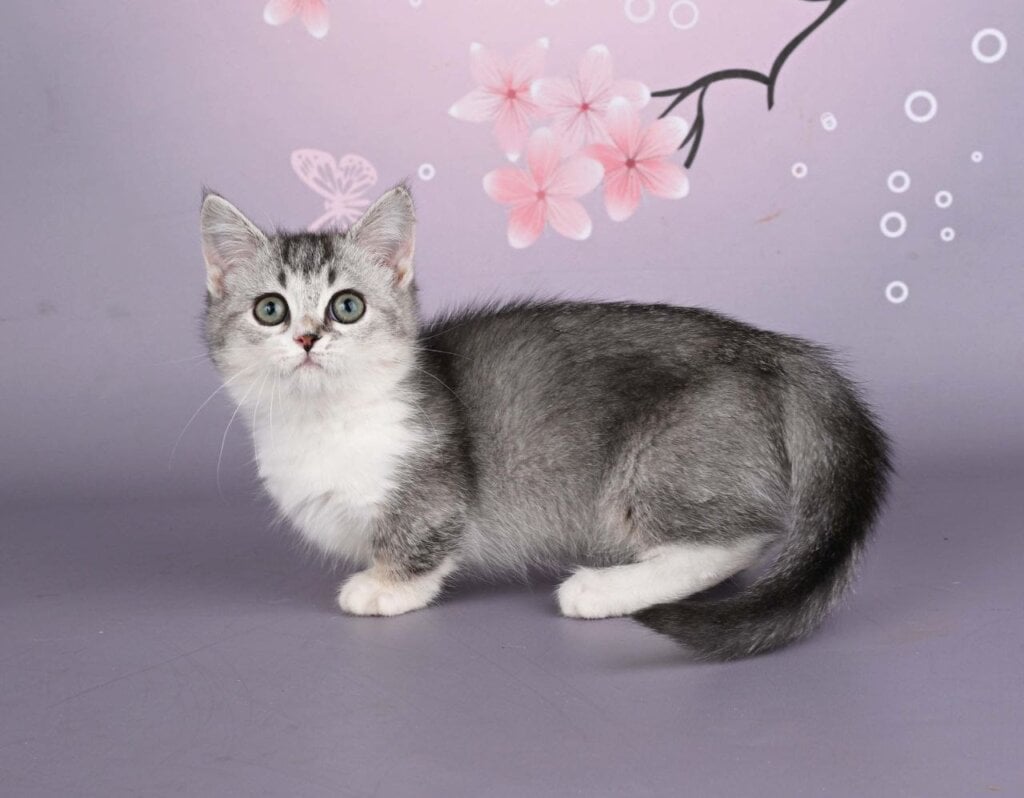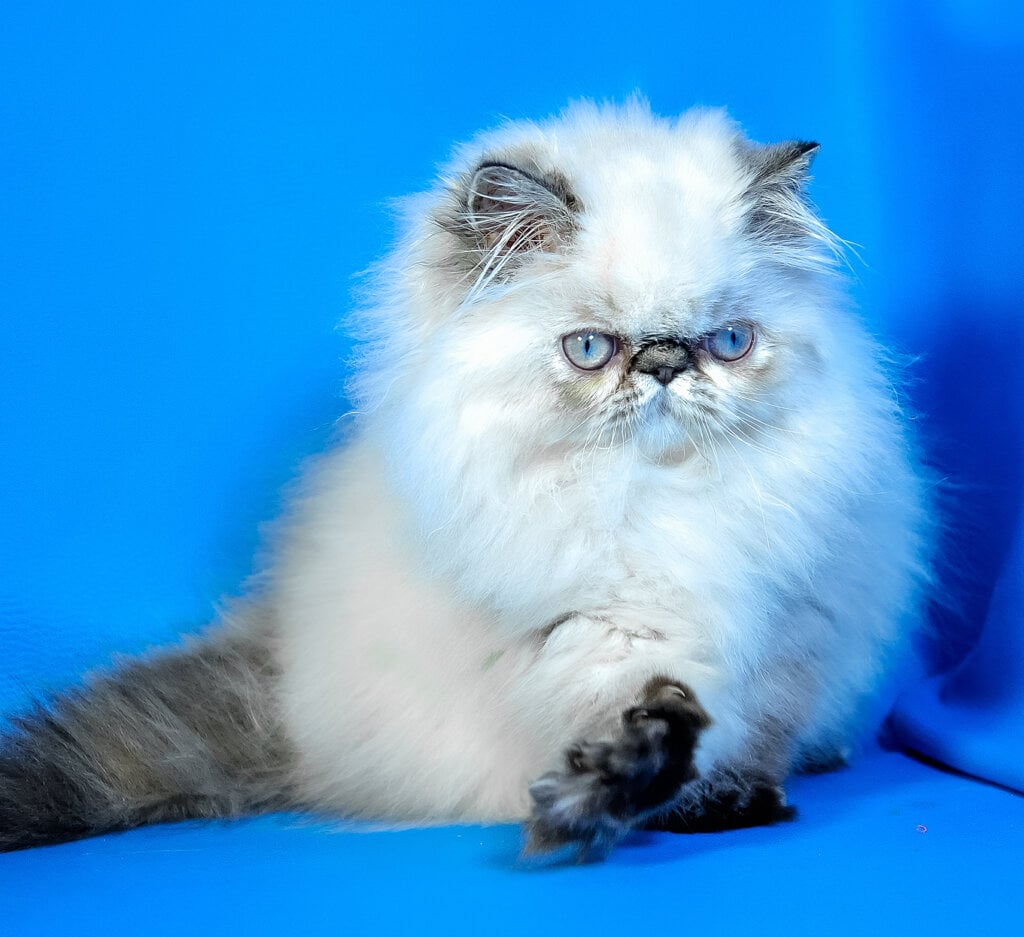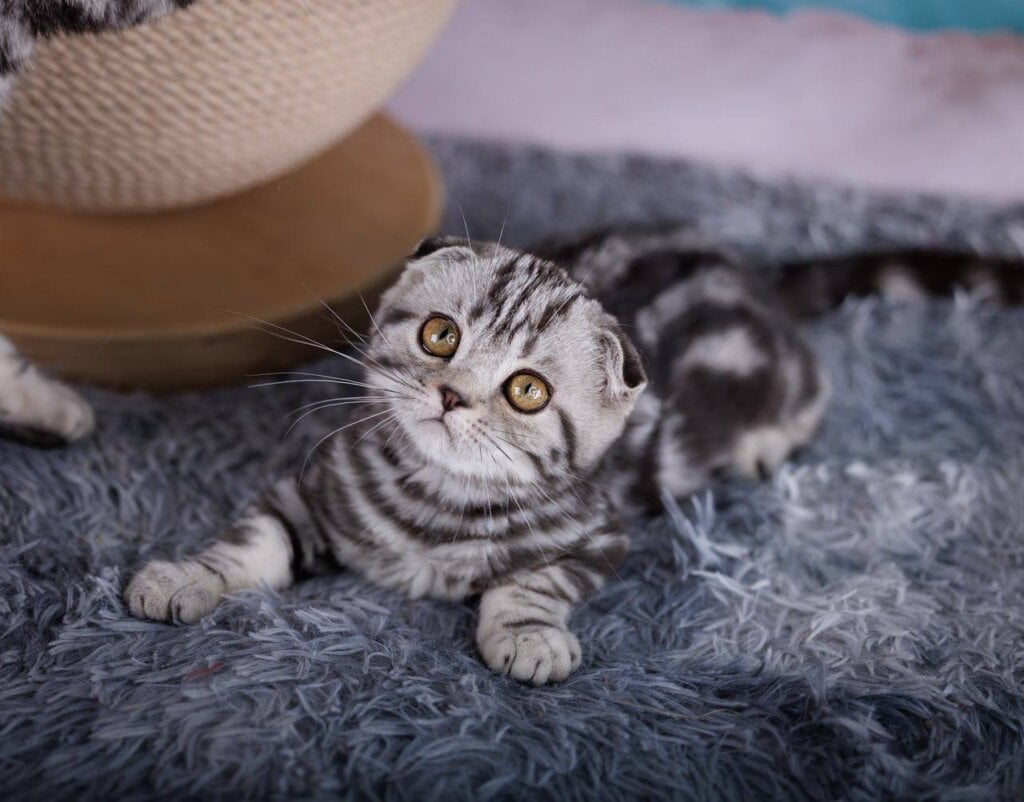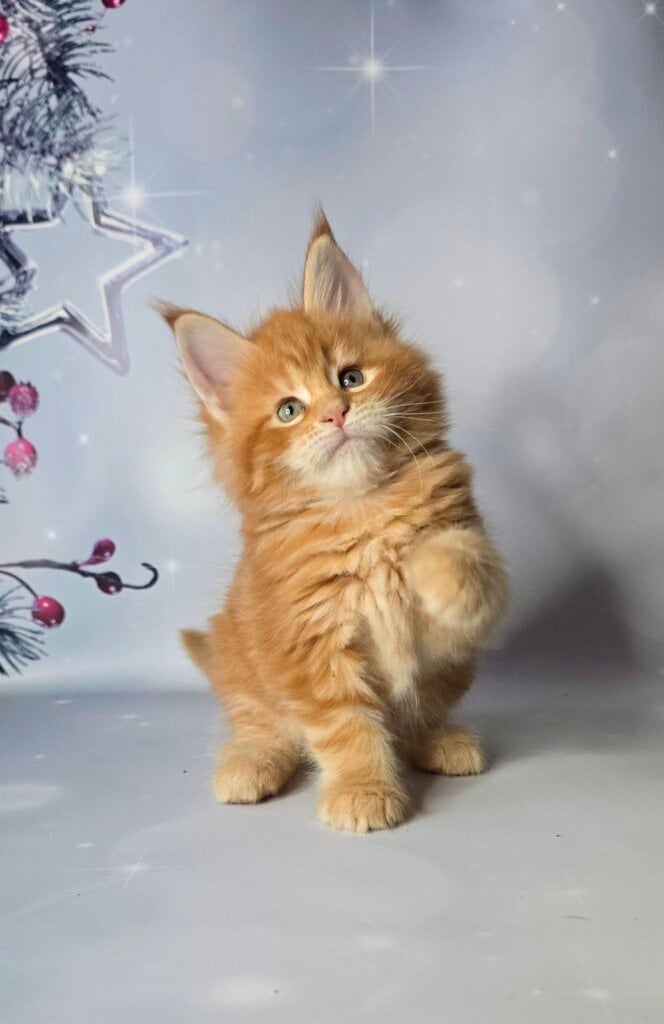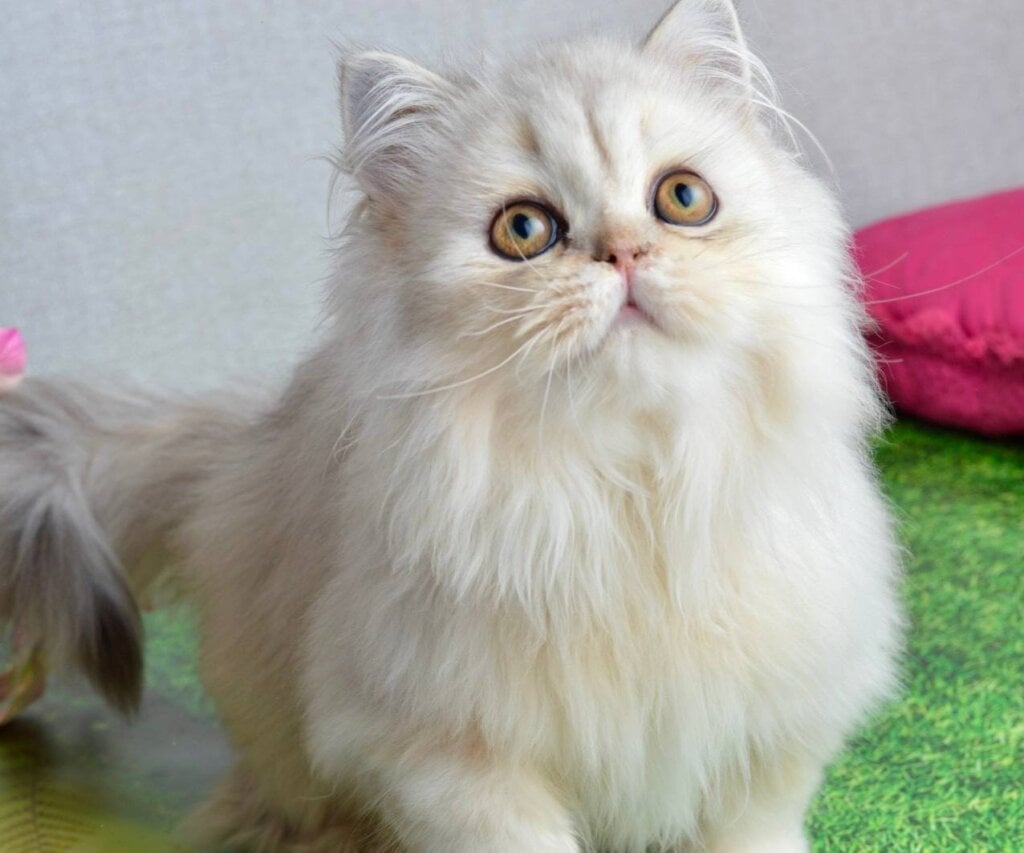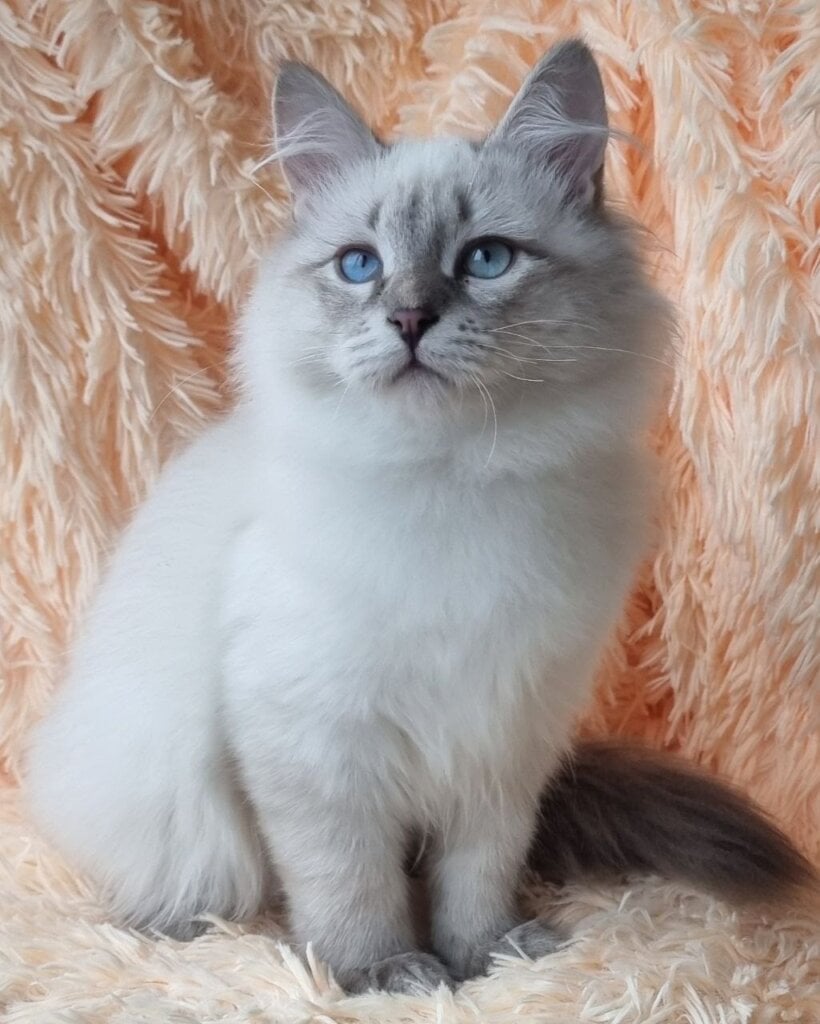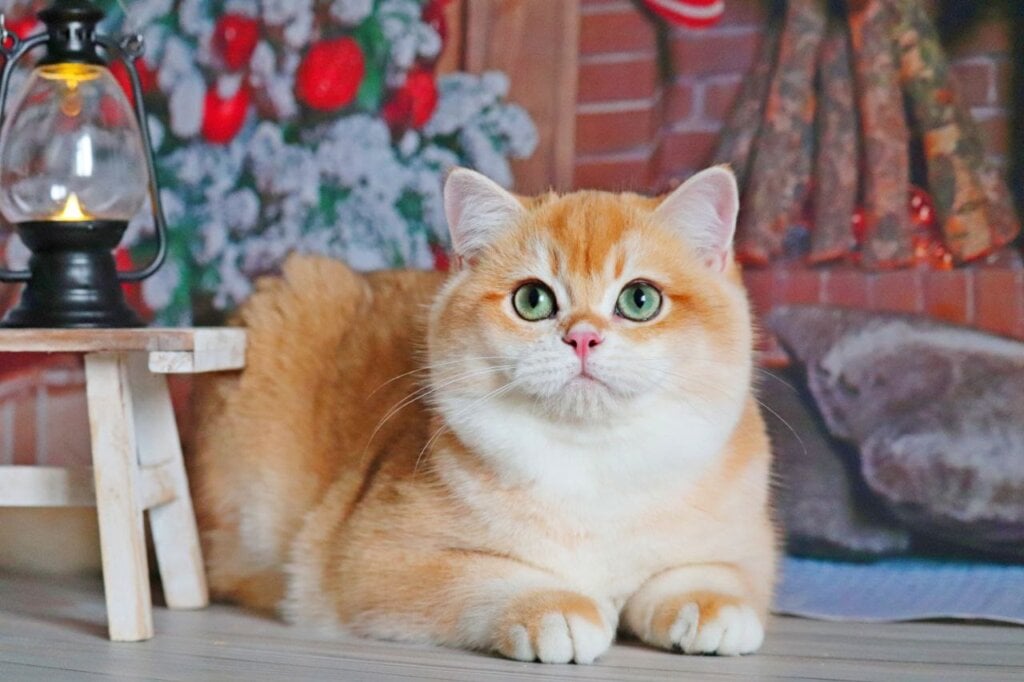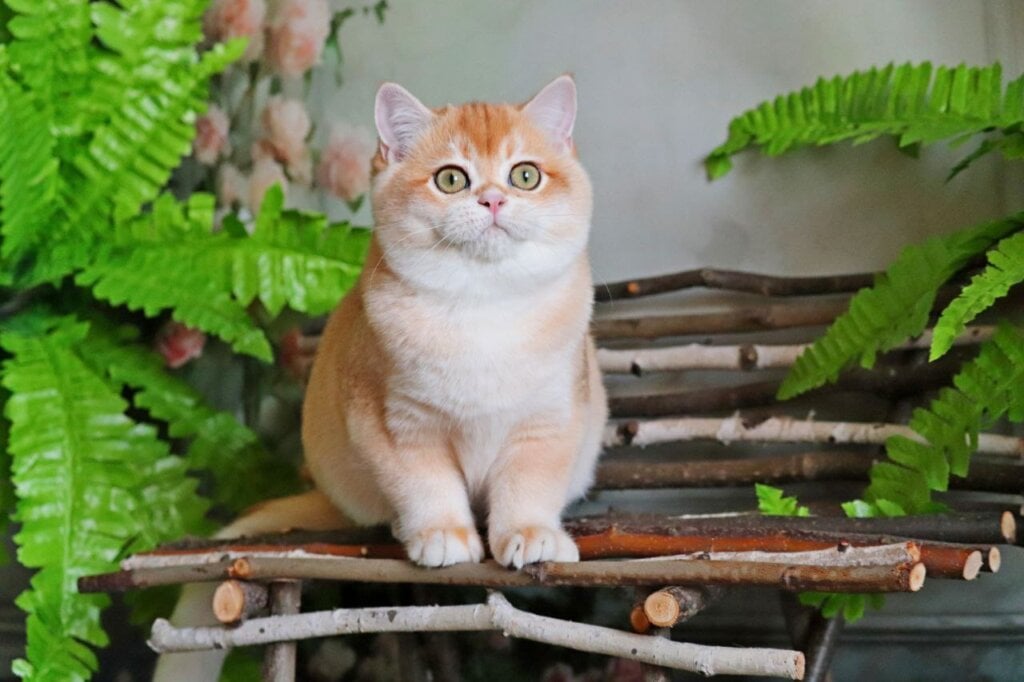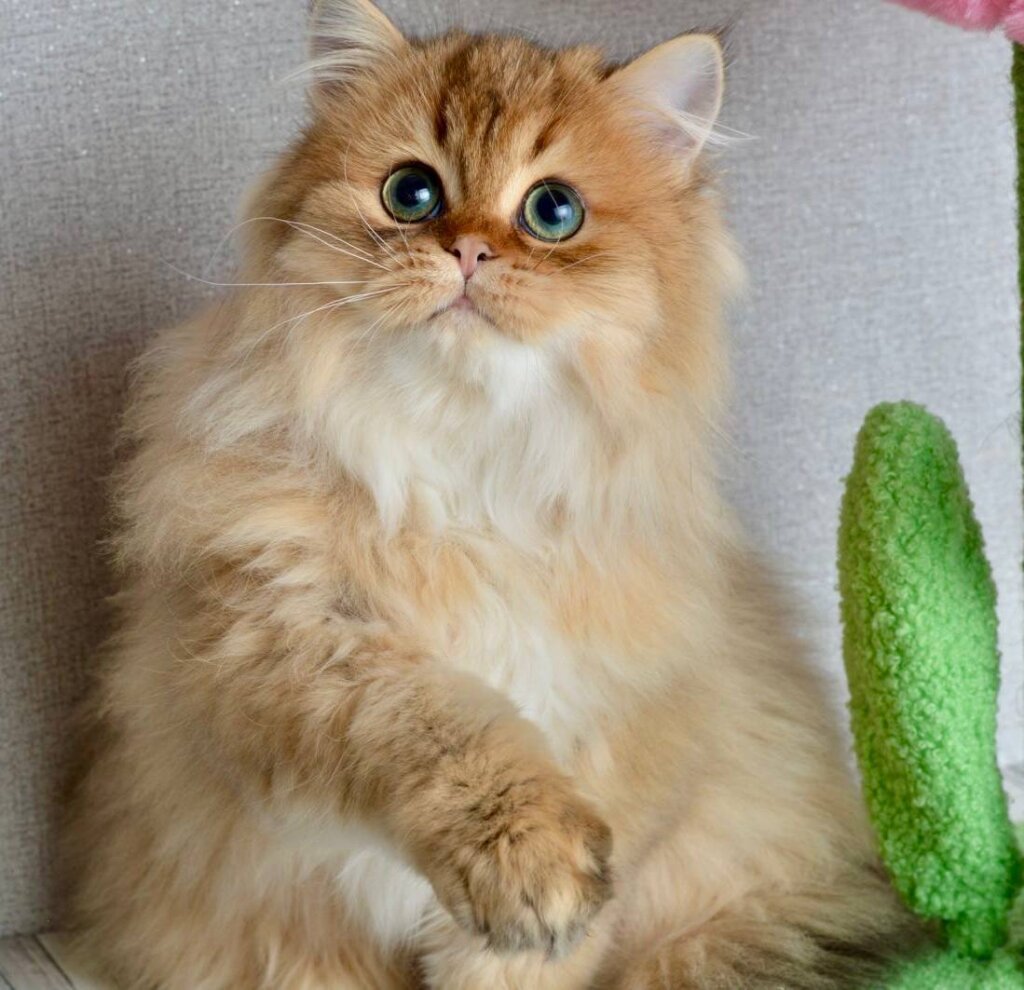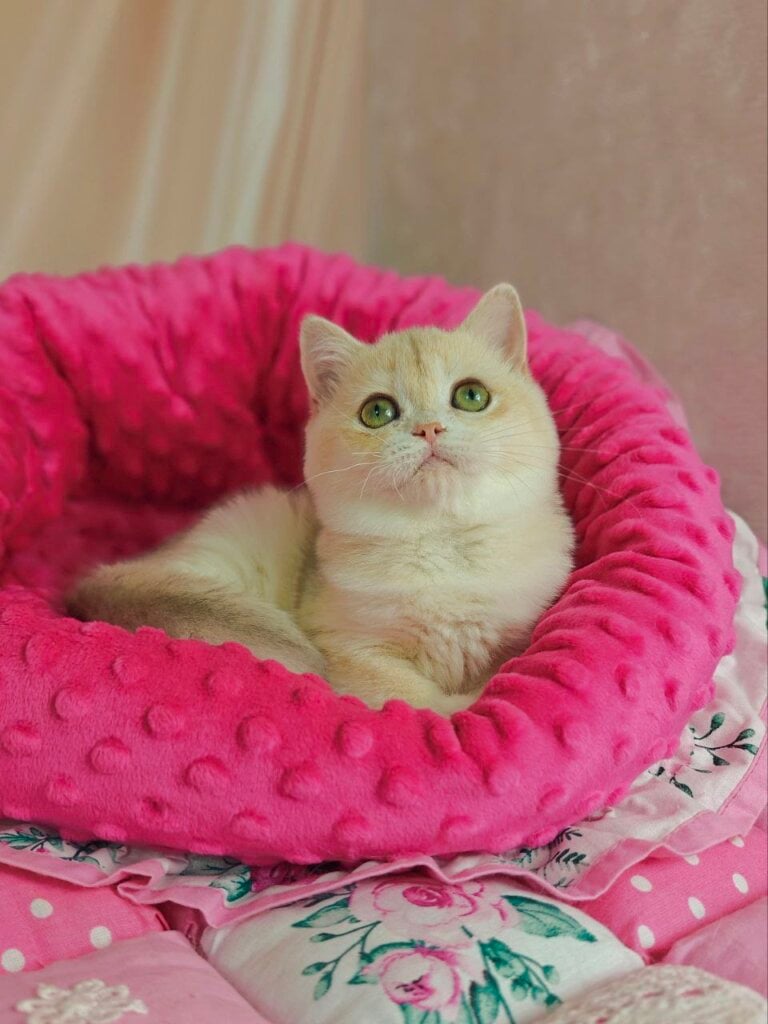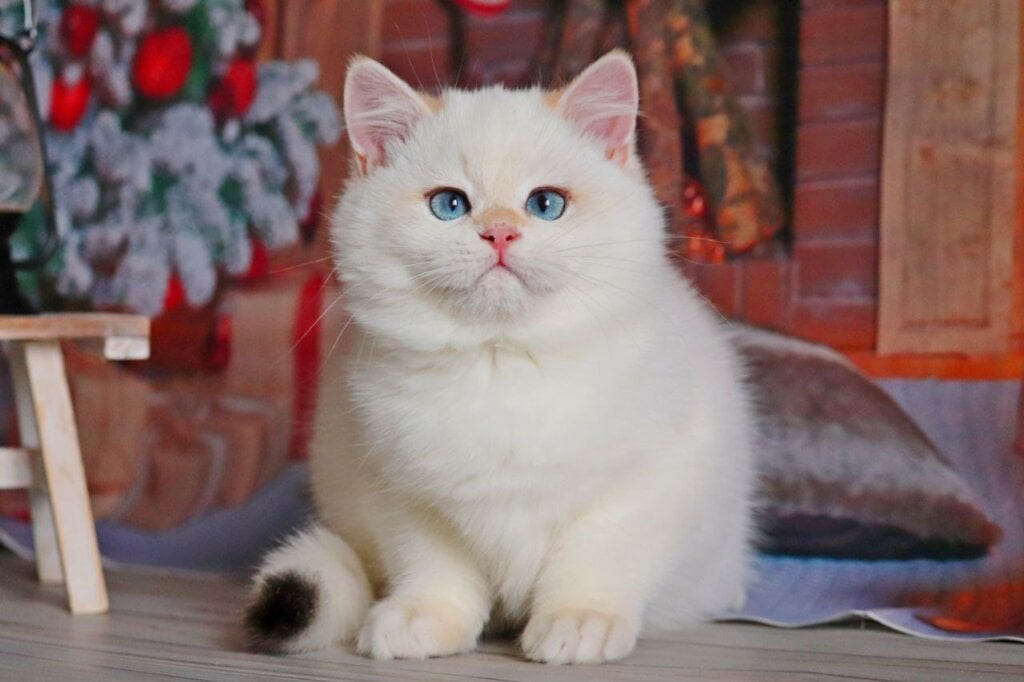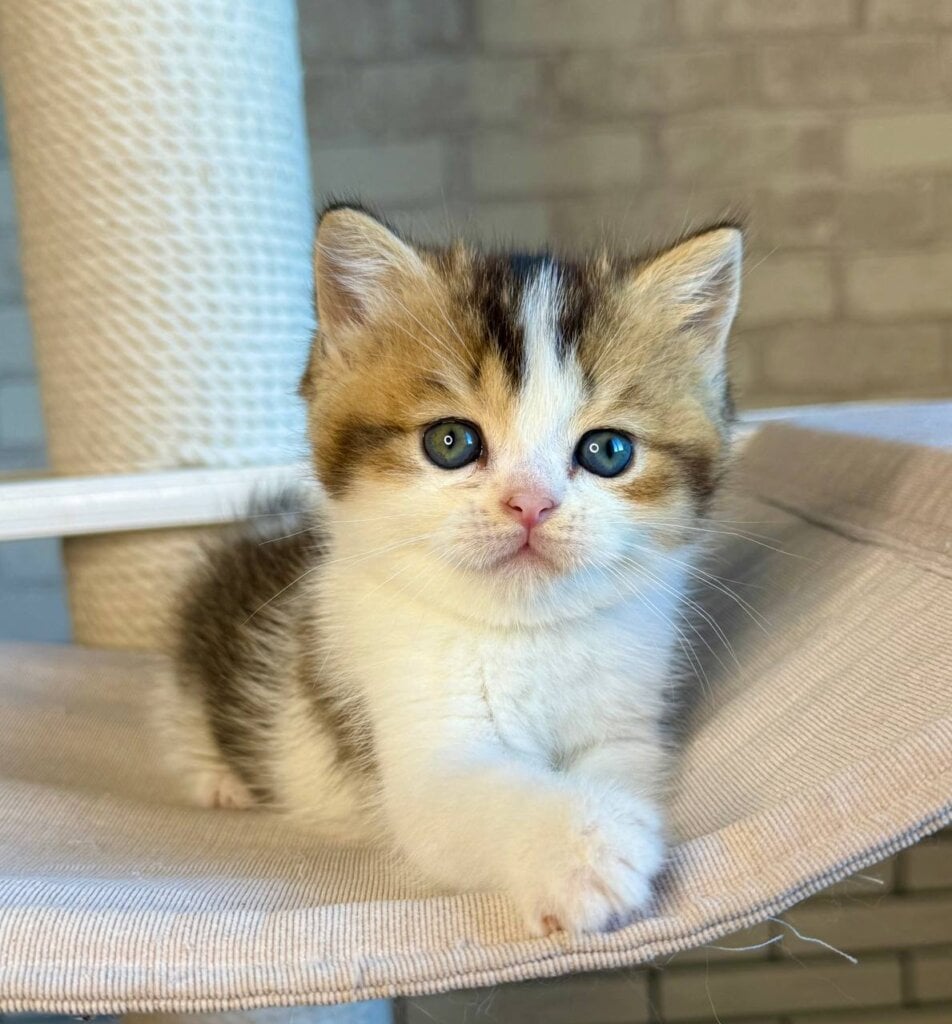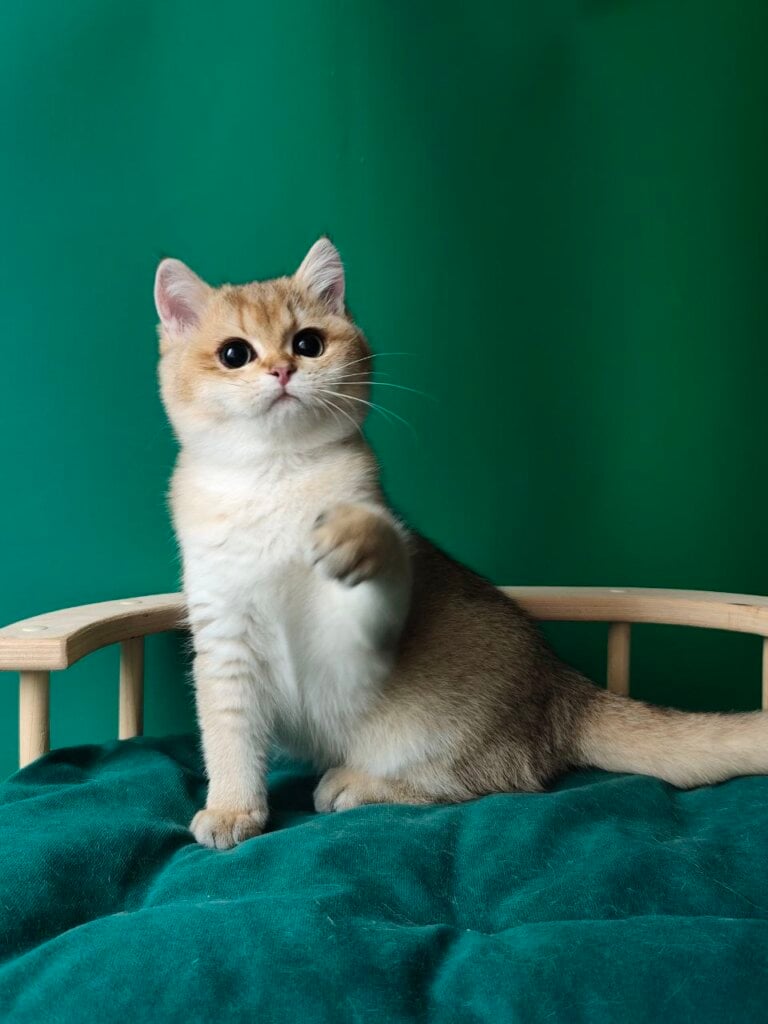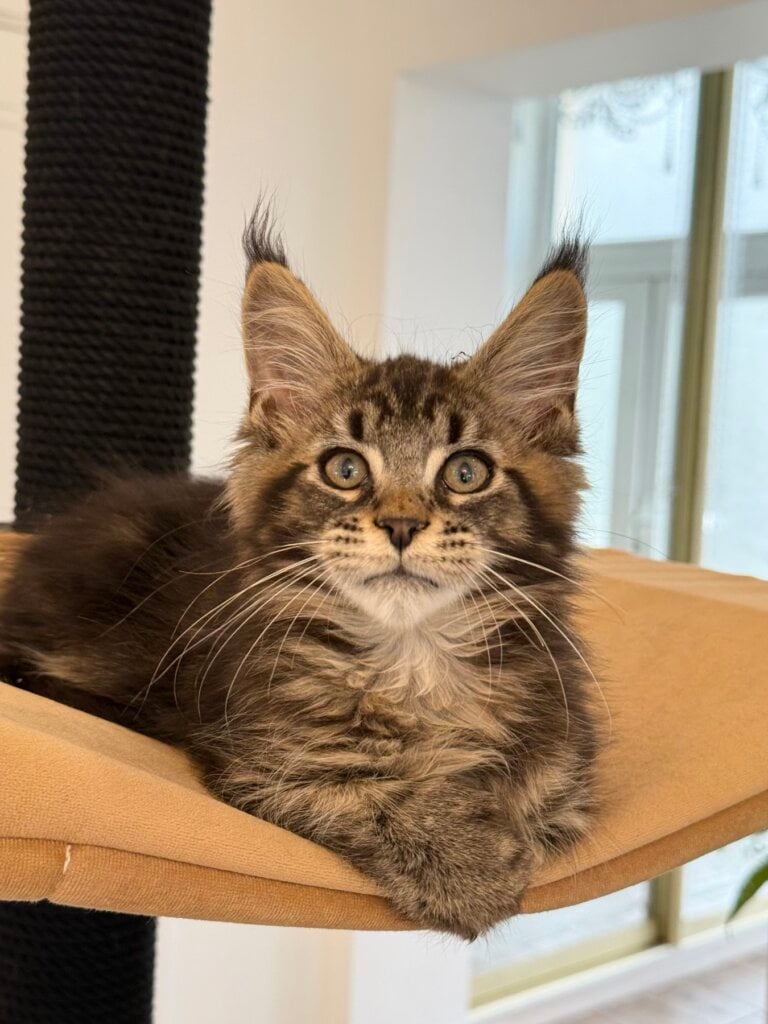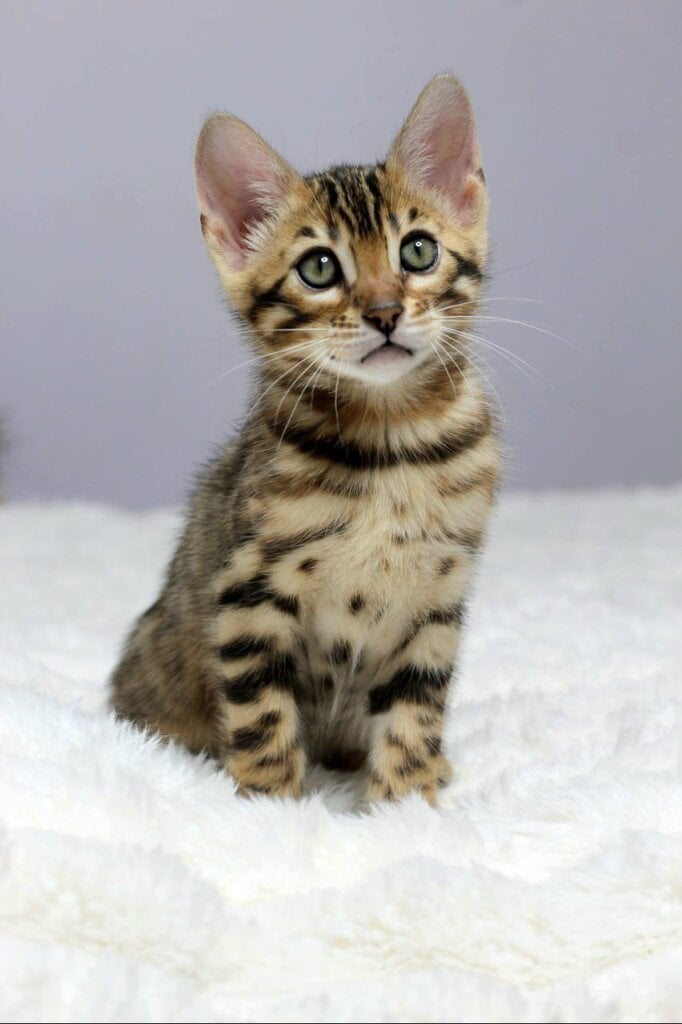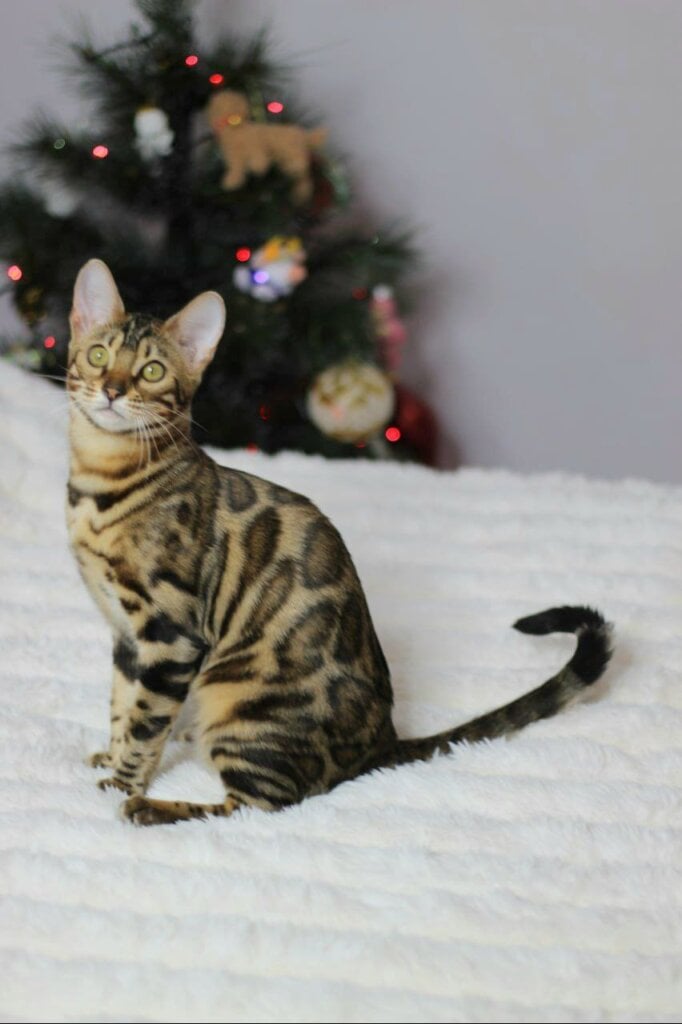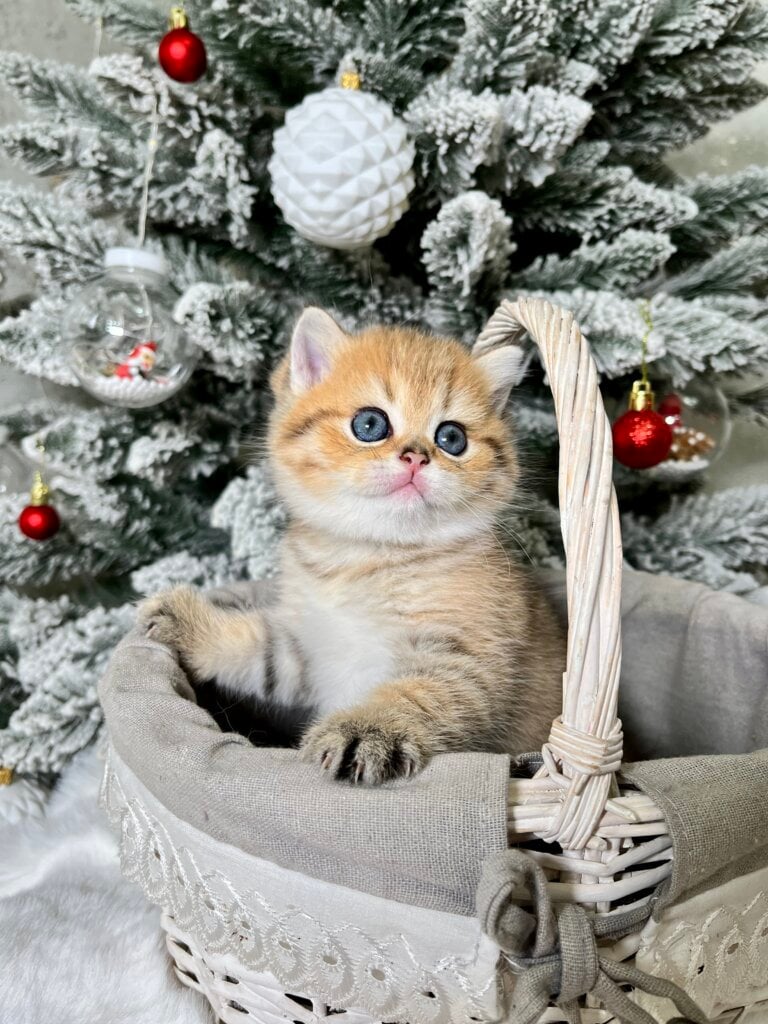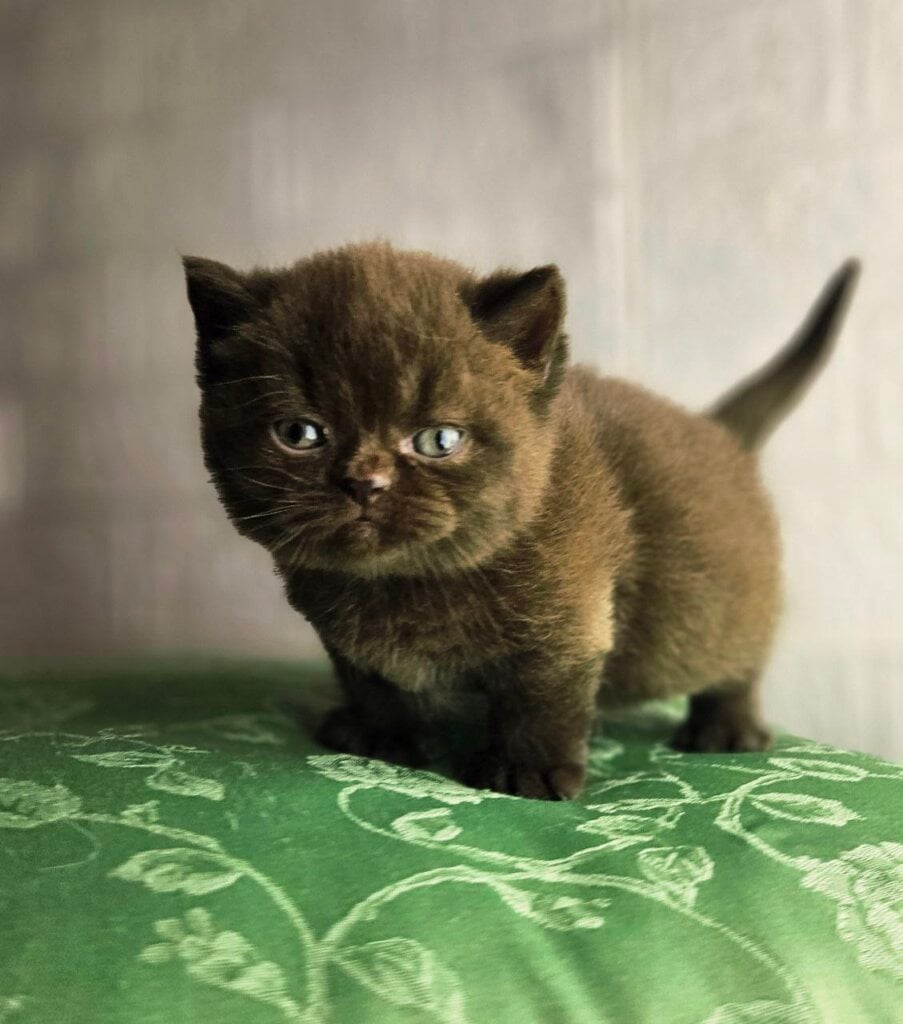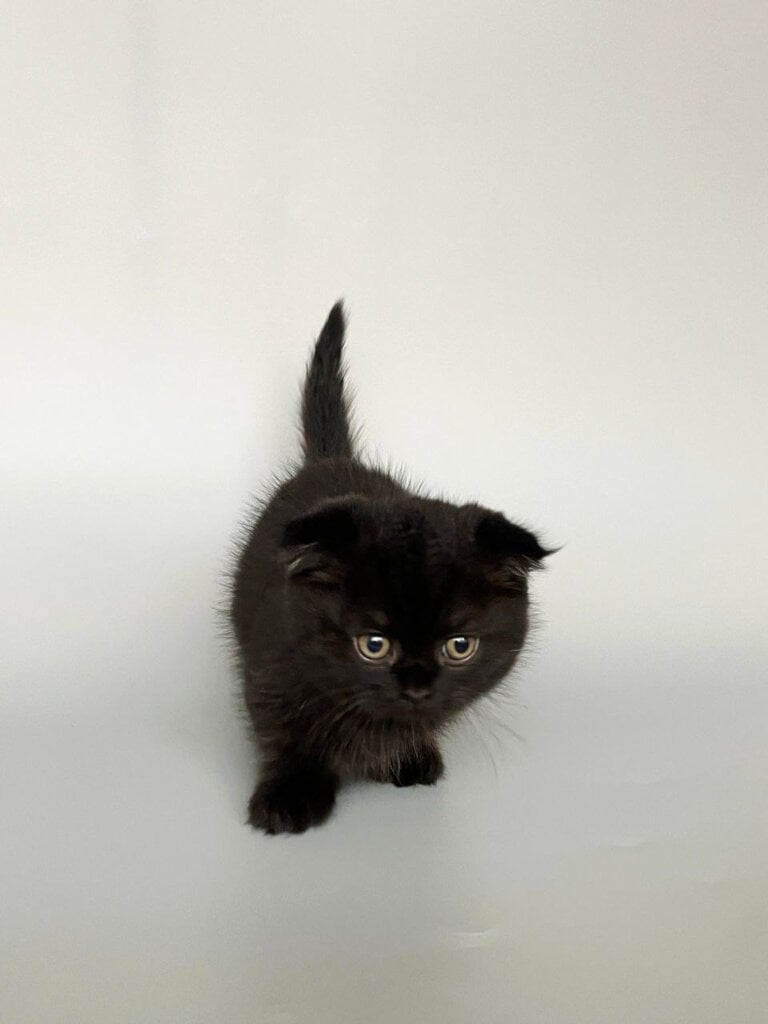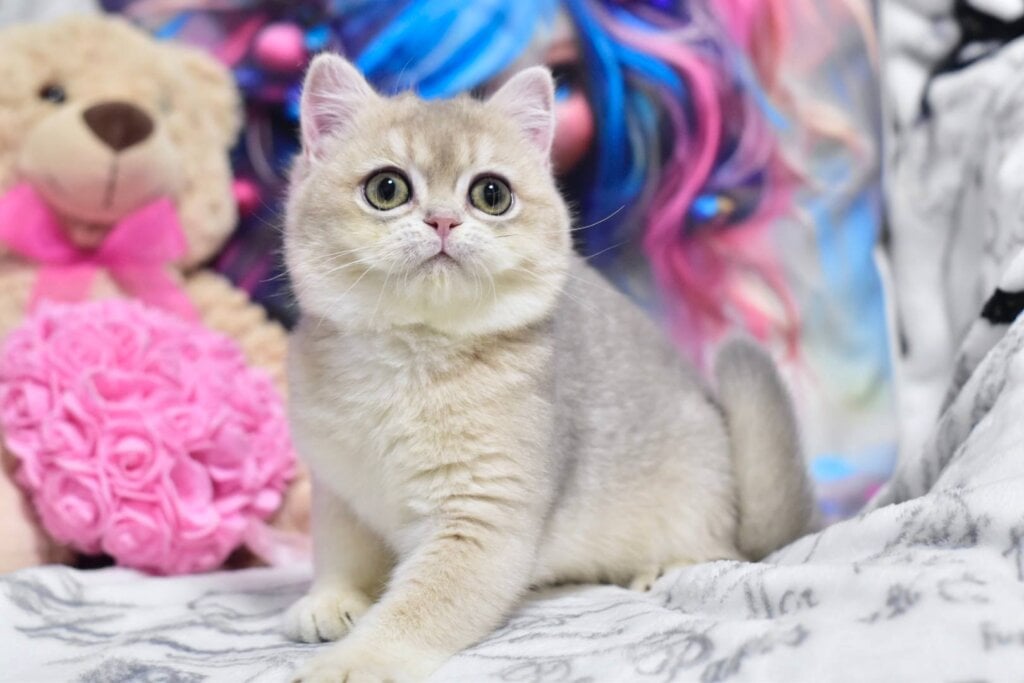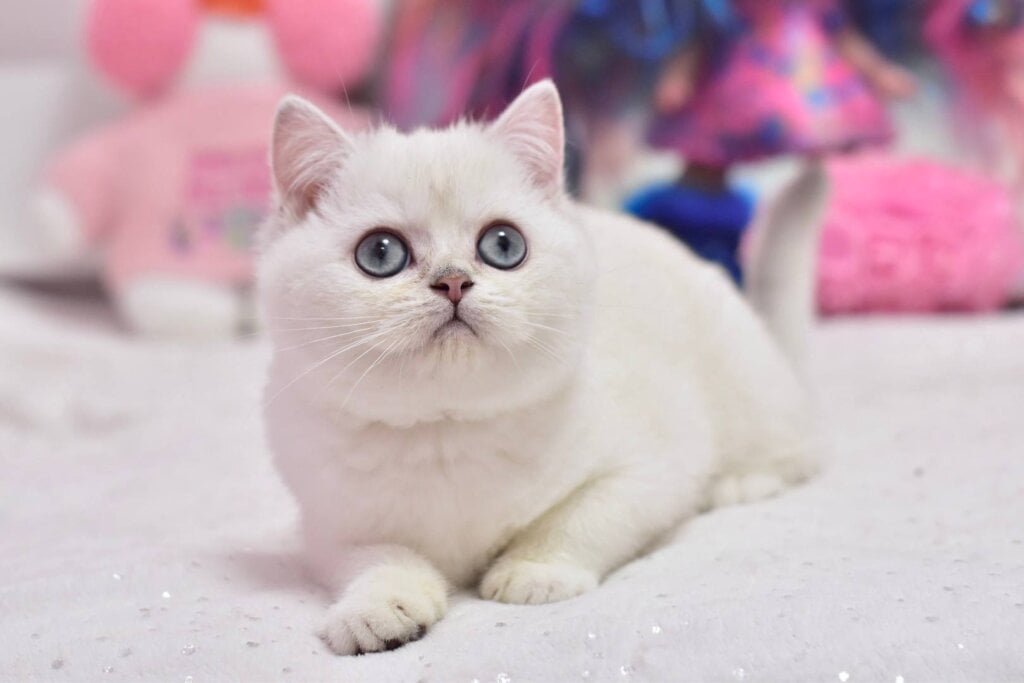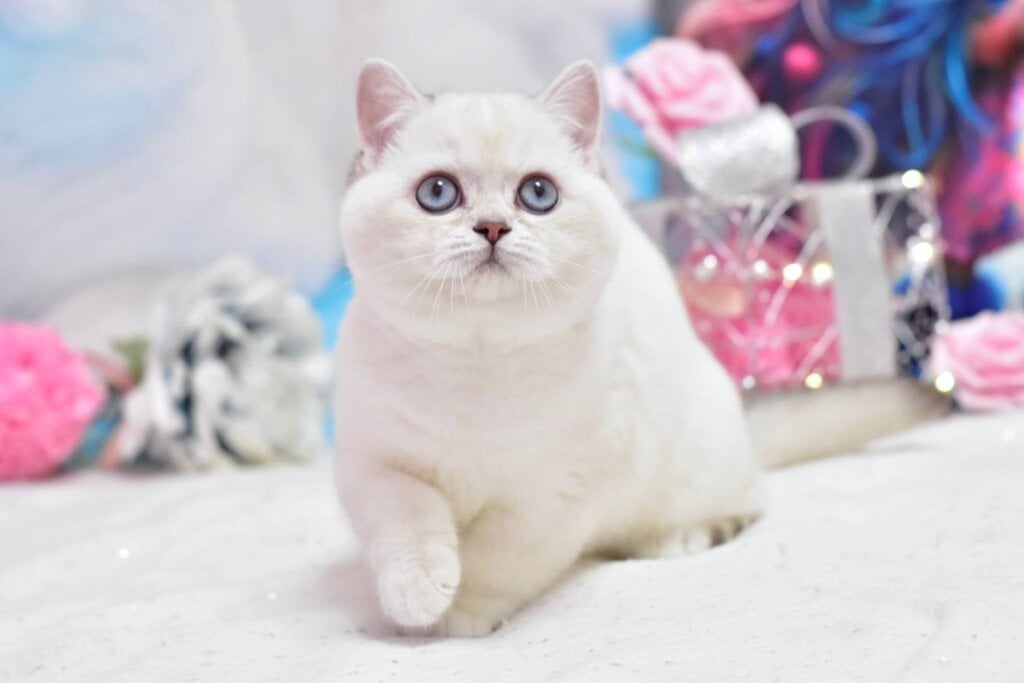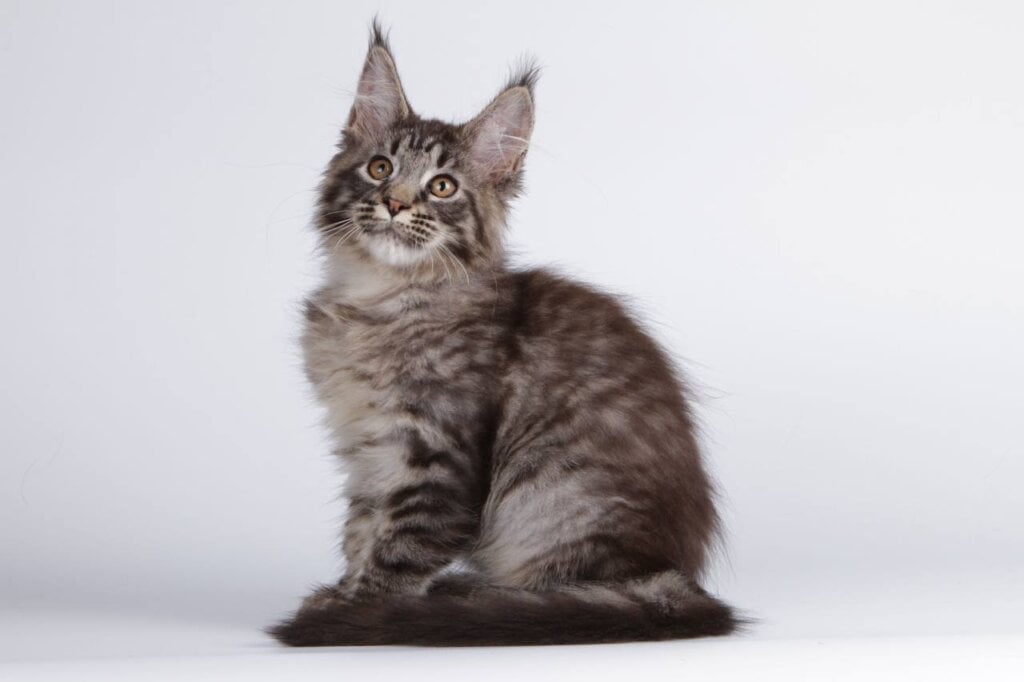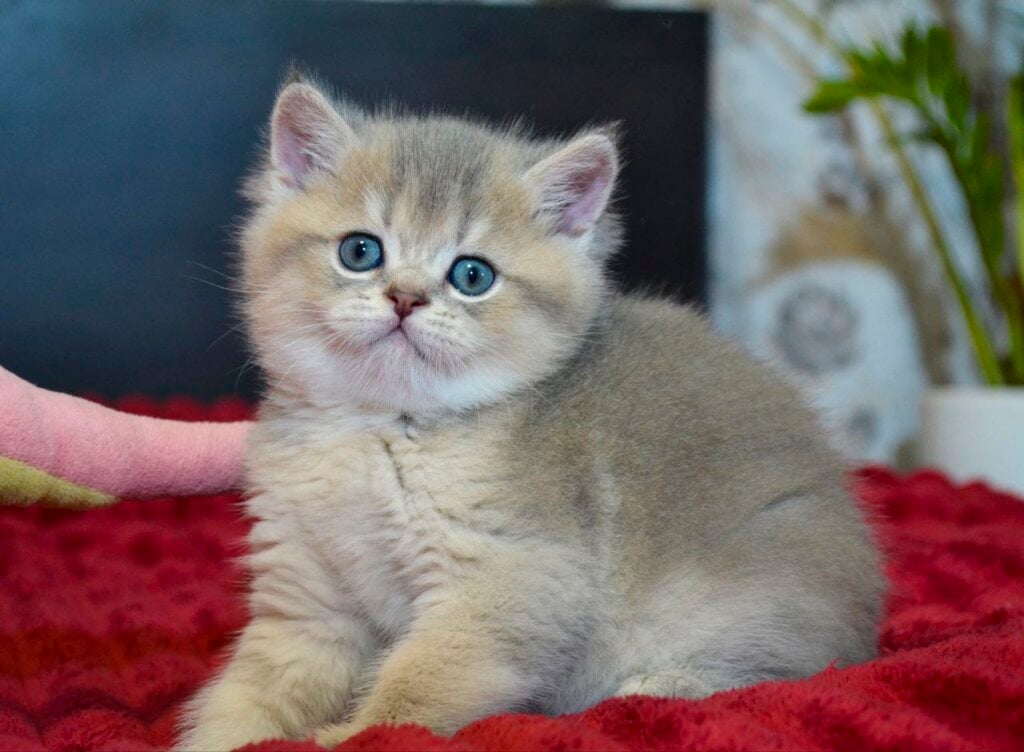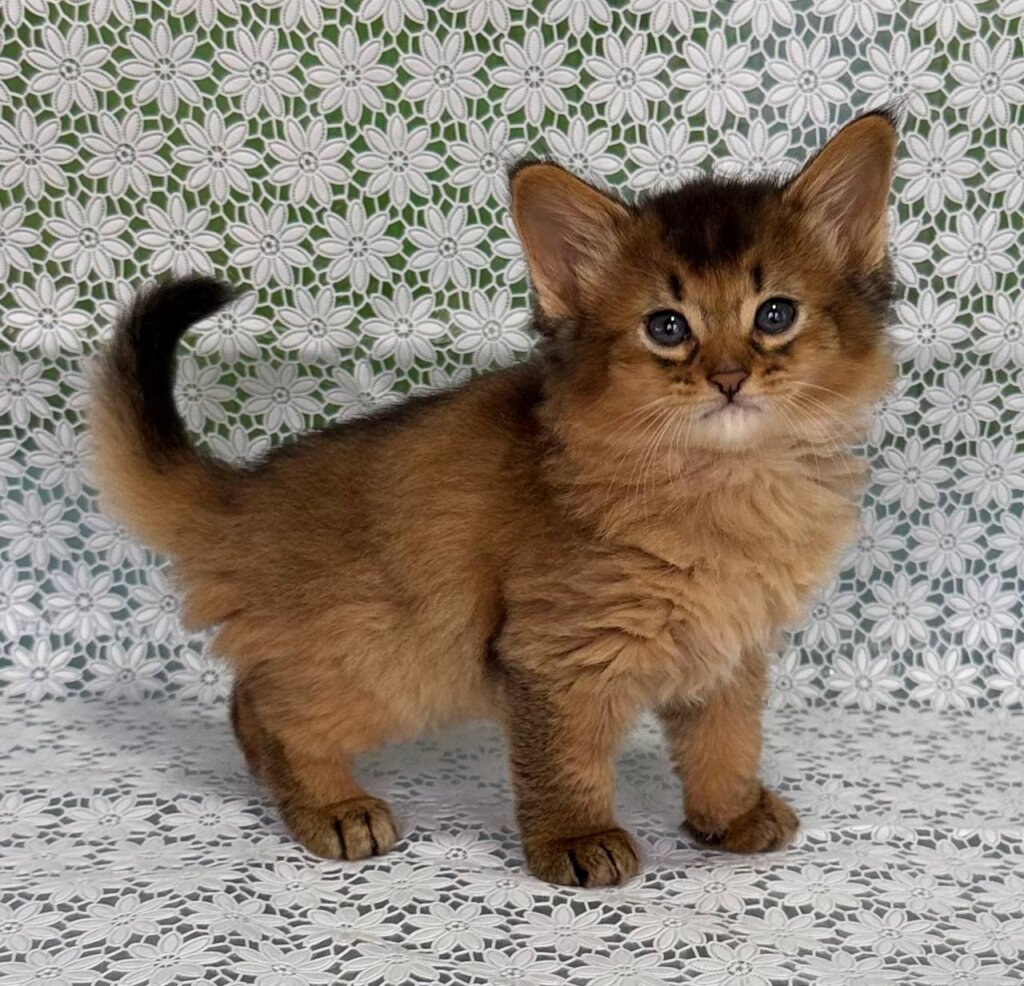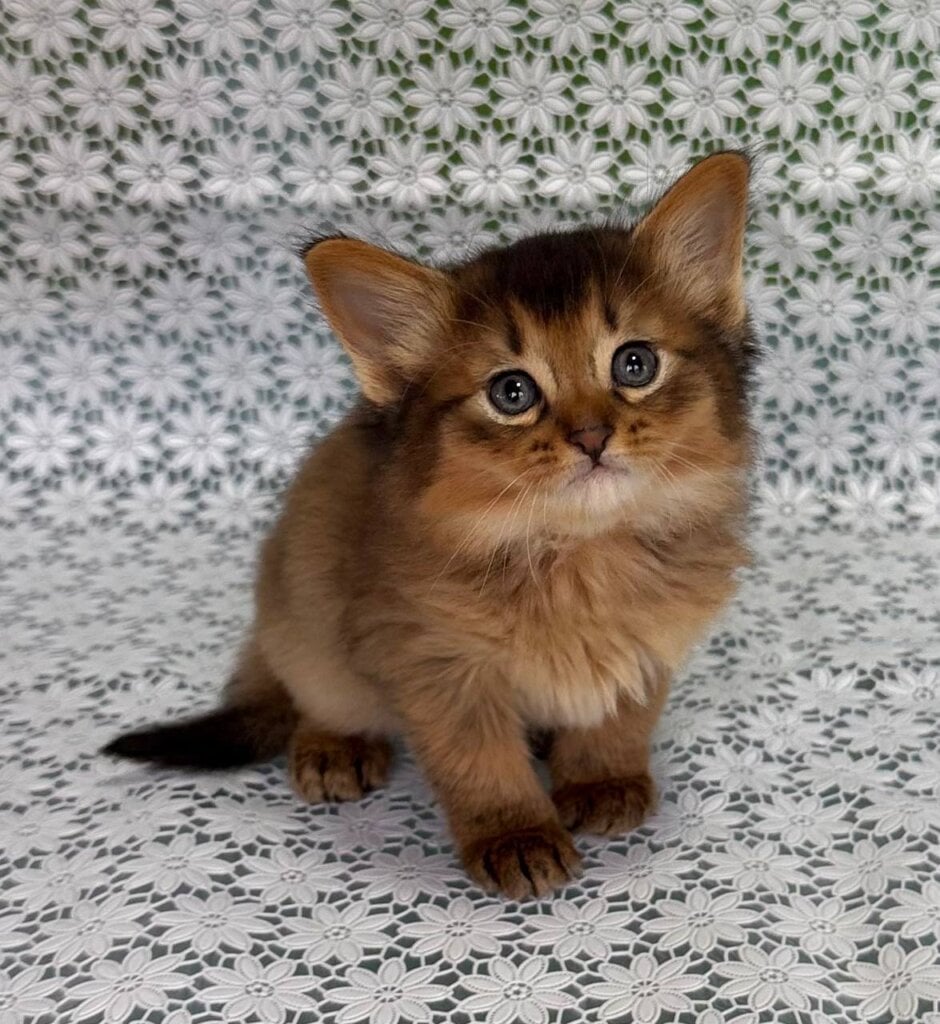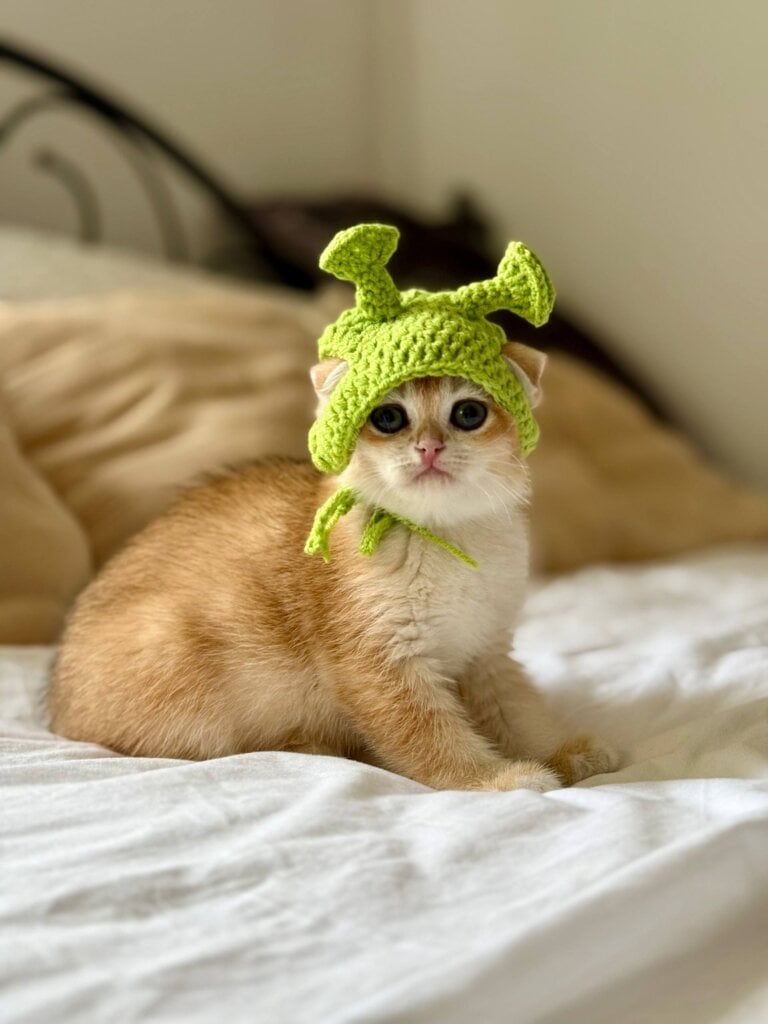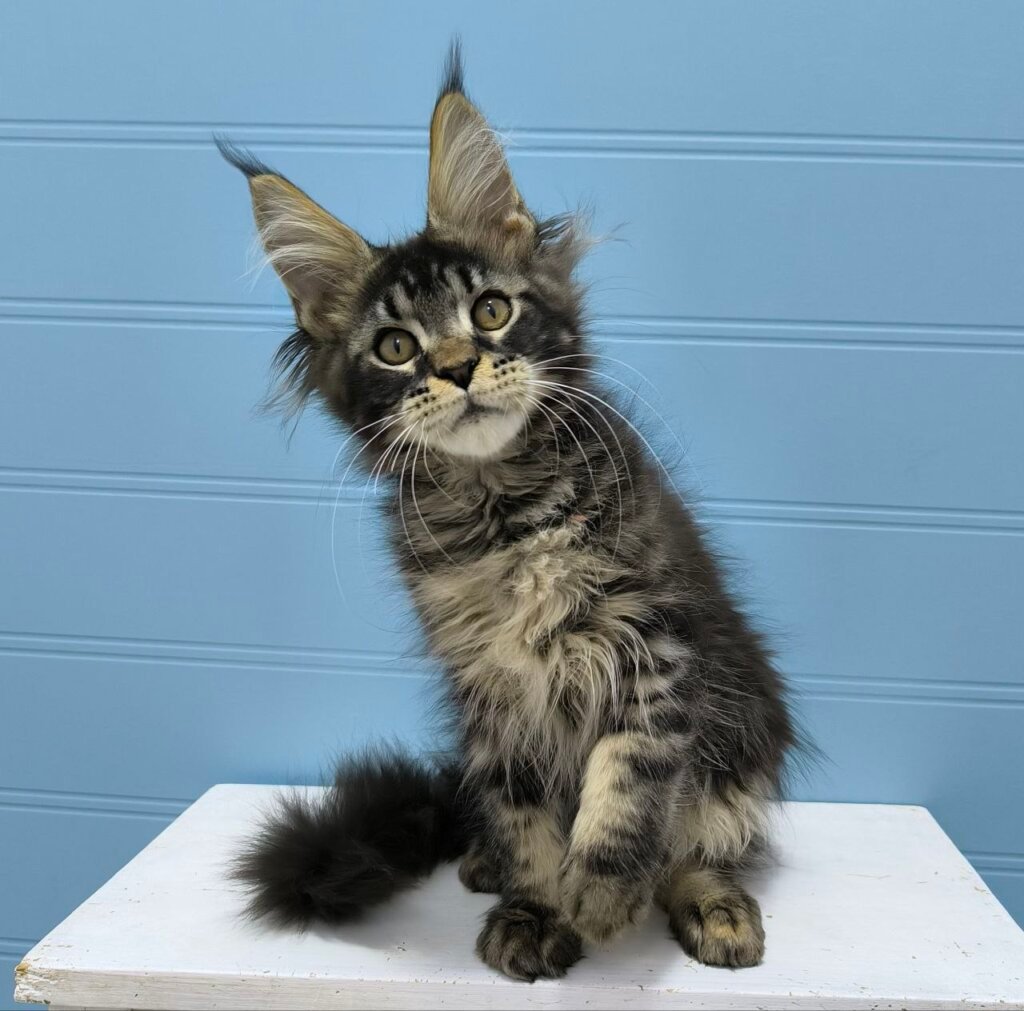Scottish Fold cats grow to an adult weight of approximately 3 to 6 kilograms and are usually 20 to 25 centimeters tall at the shoulder. Their size is just right for most homes and is ideal for families wanting a medium-sized cat. With their rugged bodies and round faces, these cats are almost impossible not to cuddle. To assist in picking the perfect feline, the subsequent chapters discuss development, maintenance and additional specifics.
Scottish Fold Cat Size
Scottish Fold cats are medium in size, measuring approximately 25-30 cm (10-12 inches) in height and weighing around 2.7-6 kg (6-13 pounds). Their stocky frames and wide heads make them appear more robust than they are-the largest Scottish Folds aren’t the biggest cats on the block. Males are generally more bulky than females. Size – Scottish Folds are a little bigger than Siamese cats but smaller than Maine Coons. Their body length equals height, making them cobby but proportional.
Key considerations for prospective owners:
- Scottish Folds are not big, but require space to wander.
- Males are often a little heavier and bulkier.
- Diet and health affect a Scottish Fold’s final size.
- They slowly grow and don’t reach their full size until they are 3-4 years old.
- Their weight and build suit most homes, including apartments.
1. Male Size
Adult male Scottish Fold cats normally tip the scales somewhere in the neighborhood of 4-6.8 kg (9-15 pounds). They have a solid muscular build that really pops, especially in comparison to females. Their wide chests and dense bodies make them appear even more solid, contributing to their appeal to those who want a strong furry friend.
Male growth patterns may vary due to genetics or diet. There are males who fall on the upper end of the size spectrum, and some that remain more average. Diet plays a big role in how much your male Scottish Fold grows. Most males continue to grow-gradually-until they’re approximately 2.5 years of age, so anticipate size variations even post their 1st birthday.
2. Female Size
Adult female Scottish Fold cats are smaller at 3-5 kg (6.6-11 lbs). They seem to be more petite and delicate than the males. Yet they retain the breed’s signature round face and compact body.
Maintaining a healthy weight is important for females, as additional weight can put strain on their joints and impact their overall health as they age. Females can get a little bigger until age 2, but the majority of their size emerges in the first year.
3. Kitten Growth
Scottish Fold cats grow fast in the first six months, often doubling their weight in the first few weeks. Babies less than one month can gain 10-15 grams a day. From one to six months, they put on weight consistently, but the pace decelerates as they approach adulthood.
Monitoring growth allows us to identify any issues as early as possible. If a kitty is not putting on pounds, it’s prudent to consult a vet. By feeding a nutritionally balanced diet from the very beginning, you set the cat up for healthy growth and a strong adult cat.
4. Full Maturity
Scottish Fold cats become full-sized around 3 to 4 years of age.
Both males and females gain weight slowly until maturity.
Frequent vet appointments aid to keep growth on schedule.
Coming full maturity, more steady behavior and a calm, stable temperament develops.
What Influences Their Growth
Scottish Fold cats can vary quite a bit in size, primarily because of a combination of genetics, diet, age and health. Their growth is shaped by many things, from what they inherit to how they live each day. Understanding what influences their growth assists you in providing your cat with the healthiest, happiest life.
Key factors that influence Scottish Fold growth and size:
- Genetics and inherited traits
- Nutrition and feeding habits
- Age and developmental stage
- Health conditions (like osteochondrodysplasia, PKD, heart issues)
- Breeding choices and genetic selection
- Physical activity and environment
Genetics
Genes have a large influence on how large a Scottish Fold grows. Males usually pound out 4–6 kg, females tend to hover around 2.7–4 kg. They’re not random – these numbers come from the parents’ genes, passed down with every litter. Some cats have two fold genes (homozygous), others just one (heterozygous). Homozygous folds usually have additional health concerns and it can inhibit their growth or cause arthritis-like pain. That’s why most cautious breeders don’t ever breed two folded-eared cats together.
Picking a quality breeder makes all the difference. A good breeder checks for health issues related to size, like osteochondrodysplasia, the same gene that folds their ears. This disorder can inhibit growth and cause pain. They can inherit risk for diseases such as PKD and hypertrophic cardiomyopathy. Understanding your kitten’s genetic lineage can assist you in preparing for their development.
Nutrition
Like anything else, a Scottish Fold requires a healthy and balanced diet to grow correctly. Kittens grow quick between three and six months, then bulk-up more gradually as adults. Protein-packed foods, good fats, and the proper vitamins assist muscles and bones to come together. Wet food and premium dry kibble both do the trick – as long as they’re formulated for kittens or young cats.
Over-feeding can pose an issue. Obesity causes joint pain and heart strain. Table scraps or treats ought to be infrequent. Talk to your vet if you’re unsure of what, or how much, to feed. They’ll assist you in selecting the optimal diet for your cat’s stage of life and requirements.
Activity Level
Scottish Folds need to play to keep them tone. Cats who stalk toys, or climb trees, or chase light beams expend energy and maintain a healthy weight. Daily play helps keeps bones and hearts strong.
With nothing to do, a cat can get bored and lazy. That can result in weight gain, achy joints and decreased muscle. Experiment with rotating toys, introducing a cat tree, or hiding treats – anything to keep your home exciting for them. A busy cat’s a happy cat.

Size and Health Connection
Scottish Fold cat size and health/life quality are the same coin. These cats reach a medium to large size body size, with females weighing 2.7 – 4 kg and males weighing 4 – 6 kg. Size is related to genetics, feeding and care. Scottish Folds are susceptible to a few inherited health conditions, so monitoring their size can help you detect problems early and promote a longer, happier life.
Bone Structure
Scottish Fold cats possess a robust bone structure that facilitates their trademark rounded features and solid build. Their skeletons are capable of supporting a medium to large size frame, but genetics could still add some hurdles. All Scottish Folds have the genetic mutation that causes osteochondrodysplasia. This manifests itself in the cartilage and bones and can cause joint stiffness or lameness, typically in the tail, knees and ankles. It can make some cats have stumpy, deformed limbs and odd gaits.
A well-balanced diet abundant with calcium and other nutrients is essential to maintain their bones healthy and strong. Food by itself won’t prevent genetic disease, but it does help reduce the risk of fractures or brittle bones. Because these cats can be joint prone, supportive care such as soft bedding and gentle play can help safeguard their joints throughout the years.
Weight Management
Scottish Folds require cautious size regulation so as to not add additional strain to their joints and organs. Overfeeding can rapidly lead to obesity, which works as a double whammy–it makes movement tougher and exacerbates joint pain. Portion control is key – feed measured meals, not free-fed, and use feeding times to help avoid over-eating. Healthy food that’s age and health appropriate keeps them slim.
Daily playtime, such as chasing toys or mild climbing, exhausts energy and maintains proper muscle and bone function. Maintaining a healthy weight decreases your risk of diabetes, heart problems, and advanced joint disease.
Weight Management Checklist
- Use a kitchen scale to weigh food portions
- Feed at set times, not all day long
- Choose food for their life stage (kitten, adult, senior)
- Establish daily play sessions–laser pointers, wand toys and puzzle feeders work great
- Track weight monthly and adjust portions if needed
- Avoid giving too many treats
Veterinary Monitoring
Regular vet checkups are a requirement for Scottish Folds. Vets can monitor growth and weight, detect early indicators of osteochondrodysplasia or kidney disease, and provide guidance on diet and exercise. Check-ups involve vaccinations and teeth cleaning, which stave off bigger health issues down the road.
Track your cat’s size and weight fluctuations. If you notice sudden shifts, consult your vet immediately. Monitoring helps prolong theirs, typically 11 to 15 years if well maintained.
Perceiving Their Size
Scottish Fold cats can be tricky to size up. Physical characteristics such as chubbiness, plush coats and droopy ears affect how large or small they appear. Understanding the distinction between actual size and appearance assists pet parents in making an informed decision.
The Round Illusion
Those round faces and bodies of Scotties are always fooling the eye. When you encounter one, the broad, rounded head and short, wide muzzle can cause the entire cat to appear more compact than it actually is. This illusion is enhanced by their big, round eyes and stumpy legs. To a lot of people, Scottish Folds appear small, even fragile, particularly when they’re snuggled up. Actually, they’re a mid-sized breed-mature dogs range from 2.5–6 kilos, 10–12 inches in length and 8.5–10 inches tall. Their compact, muscular bodies seem way more dense than their fluffy appearance implies. It’s this roundness that captivates and makes Scottish Folds irresistibly sweet and teddy bear-like. Still, when selecting a cat, consider their actual size, not just the initial impression.
Coat Density
Dense, plush coats go a long way towards perceiving their size. Their coats can make them appear far larger, particularly in long haired varieties. Longhaired Scottish Folds tend to appear fluffier and bigger than their shorthaired brethren, even if they’re the same body size. A thick coat contributes to the mirage, making it hard to estimate their muscle and bone underneath. Daily grooming not only maintains their coat, but helps you perceive their size. Skipping grooming allows mats to form and further conceals their actual size. If you want your cat’s look to remain sleek and sincere, be diligent about coat maintenance.
Ear Placement
Folded ears are a Scottish Fold’s signature and they influence our perception of their size. Forward-tilted ears that lay flat/down close to the head can make the cat’s head appear ‘rounder and smaller’. This special ear fold contributes to their soft, kitten-like appearance, increasing the adorableness quotient. Straight-eared kittens, which are quite uncommon in the breed, tend to appear a little larger due to their ears providing some extra height. It’s a nuanced but tangible distinction-folded ears cause a Scottish Fold to appear compact and sweet. Just one more reason to adore their cute, quirky appearance.
Looking Beyond Appearances
Scottish Folds exist in all shapes and sizes, even among the breed. Genetics, diet, health all contribute. Not always what they seem to be. Concentrate on health, behavior and fit for your home, not simply the appearance.
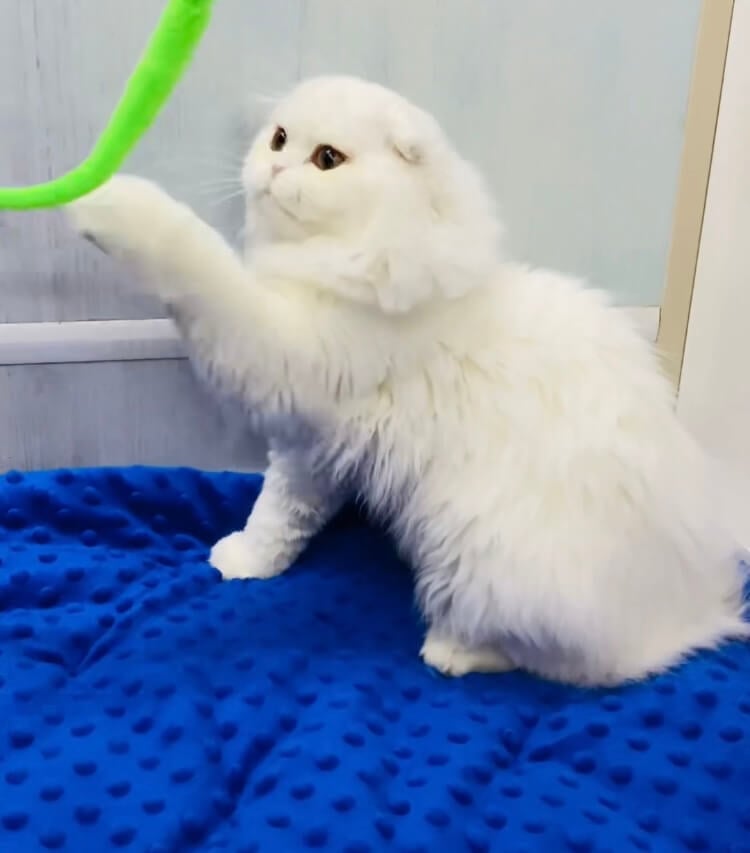
How They Measure Up
Scottish Folds belong to the medium-sized cat category, measuring approximately 20–25 cm (8–10 inches) in height. Males weigh 4–6 kg, with females smaller at 2.7–4 kg. Their petite frame and soft appearance distinguish them. We really get a feel for their size and disposition when we witness them alongside the other most sought after breeds. Being aware of these distinctions enables families to select the appropriate pet and prepare for their demands. Breed knowledge promotes responsible decisions and healthy, happy households.
Against British Shorthairs
Scottish Folds are more petite and weigh less than British Shorthairs. The average Scottish Fold male weighs 4–6 kg and females, 2.7–4 kg. British Shorthair males are heftier, 5–8 kg (11–18 lb) and females 3.5–5.5 kg. British Shorthairs stand a bit taller and are rounder and denser in frame. The Scottish Fold’s smaller stature is more manageable, particularly in households with kids or limited space.
Although both cats boast round heads and huge eyes, the Scottish Fold’s signature folded ears differentiates them, with the gene expressing as early as 3 weeks old. British Shorthairs have classic straight ears, which means they have more of a traditional appearance. Scottish Folds require consistent nail clipping and daily teeth care, whereas British Shorthairs are low-maintenance but prone to weight gain if not monitored. Both breeds are sweet-natured, but Scottish Folds tend to be more playful.
| Breed | Male Weight | Female Weight | Height |
|---|---|---|---|
| Scottish Fold | 4–6 kg | 2.7–4 kg | 20–25 cm |
| British Shorthair | 5–8 kg | 3.5–5.5 kg | 30–35 cm |
Against Maine Coons
Scottish Folds seem so tiny in comparison to Maine Coons. Maine Coons rank as one of the largest breeds, with males reaching 6–9 kg and beyond and females 4.5–6.8 kg. They’re 25–41 cm tall, nearly twice as tall as a Scottish Fold. The Scottish Fold, with its round face and folded ears, adds a soft, enchanting aura to any abode, while the Maine Coon’s sheer size is a statement in itself.
Maine Coons with their easy going dog like personalities and thick long coats, that require additional grooming. Scottish Folds are shyer but no less loving and attach deeply to their families. Both breeds can be susceptible to genetic health problems, such as hypertrophic cardiomyopathy, so routine vet sessions are essential.
| Breed | Male Weight | Female Weight | Height |
|---|---|---|---|
| Scottish Fold | 4–6 kg | 2.7–4 kg | 20–25 cm |
| Maine Coon | 6–9+ kg | 4.5–6.8 kg | 25–41 cm |
Why Size Matters for Owners
Smaller breeds like the Scottish Fold measure up perfectly in small apartments or with kids. Bigger dogs require more room, and owners must prepare for additional care, food, and grooming. Understanding how breeds vary aids families in selecting a pet that suits their lifestyle.
Responsible ownership is understanding the needs of each breed, from grooming to health vet checks. Scottish Folds are sweet, low maintenance, comfort to countless households.
Creating the Ideal Environment
Scottish Fold cats may appear chill and laid back, but they require an environment that aligns with their size, energy and special requirements. Whether your Fold is a kitten or an adult, a comfortable, maintained home environment is best for their well-being and joy. Scottish Folds grow to around 3–6 kilograms, with robust bodies and rounded heads. They require space to roam, discover, and amuse themselves. Even if your house isn’t massive, provide them with places to roam and to scale. This maintains them at a moderate weight, which is critical because excess weight can exacerbate joint issues.
It’s a good idea to employ cat trees and perches, positioned close to windows or in warm, sunny corners. They provide your cat a secure environment to climb, scratch and observe. Scottish Folds love to perch and look out – so even a robust shelf or plush bed on a window sill can help. Scratching posts and climbing towers aid them in burning energy and maintaining their claws. They love little hidey-holes as well, like covered beds or boxes, where they can tuck themselves up and feel secure.
Warm sheets and fluffy comforters count, particularly if it’s chilly. Keep their bunks away from drafts, and utilize heavy down blankets for additional protection. During warm months, keep the room cool, perhaps with a fan or good air circulation. So be sure to have fresh water on hand, and keep play sessions brief in warm weather. These tips will keep your Scottish Fold chilled and stress-free.
Scottish Folds require play each day, even though they might appear to be slouching. Toys – like feather wands, laser pointers, or small balls can get them on the move. Daily play keeps them active and close to you. It prevents boredom and assists them in maintaining a healthy weight. Rotate the toys to keep it fresh and fun. Mental games are important as well-puzzle feeders or treat balls provide them with a challenge and keep their brain active.
Grooming is easy but critical. Brush short-haired Folds weekly, and long-haired ones two or three times. This reduces shedding and prevents tangles. Clean ears and a clean home help stop disease. A sparkling fresh, well-ventilated environment keeps their ears dry and reduces ear infections and other issues.
A calm home keeps your Scottish Fold purring. Less stress = fewer health problems, such as arthritis or ear infections.


